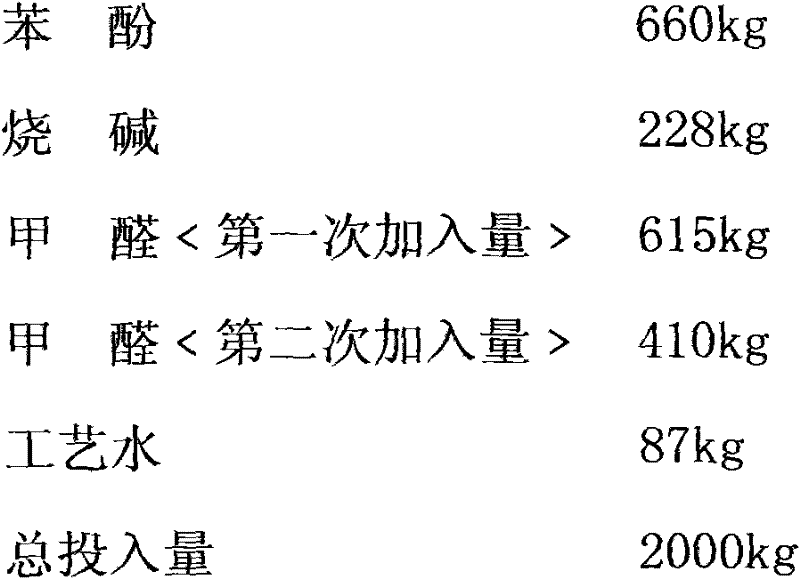Production method for phenol formaldehyde resin adhesive for bamboo recombined material
A phenolic resin glue and a production method technology, which are applied in the directions of adhesives, aldehyde/ketone condensation polymer adhesives, adhesive types, etc. The effect of complete reaction, less free aldehyde and reduced amount of glue
- Summary
- Abstract
- Description
- Claims
- Application Information
AI Technical Summary
Problems solved by technology
Method used
Image
Examples
Embodiment Construction
[0040] The present invention mainly adopts high molar ratio phenolic resin (P: F: base = 1: 2.16: 0.25) and multiple polycondensation of phenol and formaldehyde by optimizing the production process of rubber making. Under the condition of high temperature, the chemical reaction completely makes the glue free phenol ≤ 0.1%, the glue free aldehyde ≤ 0.2%. The performance of the glue meets the existing production technology, and the physical and chemical performance indicators of the bamboo meet the GB / T19536-2004 standard.
[0041] Glue quality index:
[0042] 1. Solid content 46-49%
[0043] 2. Viscosity 80-200 seconds / 20℃B4
[0044] 3. Free phenol ≤0.1%
[0045] 4. Free aldehyde ≤0.2%
[0046] Through the formulation process of the above two glues, and compared with the quality indicators, the free phenol and free aldehyde of the glue are significantly lower than the original glue in the free aldehyde and free phenol of the newly invented phenolic resin glue. The reasons f...
PUM
 Login to View More
Login to View More Abstract
Description
Claims
Application Information
 Login to View More
Login to View More - R&D
- Intellectual Property
- Life Sciences
- Materials
- Tech Scout
- Unparalleled Data Quality
- Higher Quality Content
- 60% Fewer Hallucinations
Browse by: Latest US Patents, China's latest patents, Technical Efficacy Thesaurus, Application Domain, Technology Topic, Popular Technical Reports.
© 2025 PatSnap. All rights reserved.Legal|Privacy policy|Modern Slavery Act Transparency Statement|Sitemap|About US| Contact US: help@patsnap.com

